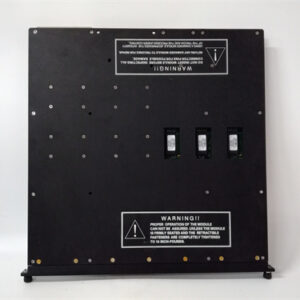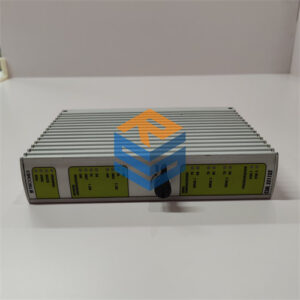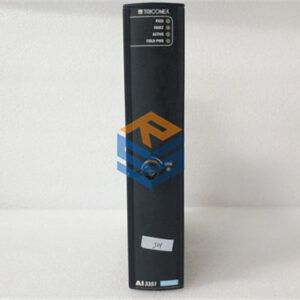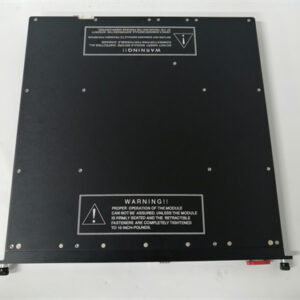الوصف
The user is asking about the Triconex 3706A. The search results confirm that this is a high-density thermocouple input module with a Triple Modular Redundant (TMR) architecture. The key details are:
- Model: 3706A
- Function: Thermocouple Analog Input
- Signal Types: Supports Thermocouple types J, K, and T.
- Points: 32 differential, DC-coupled input channels.
- Architecture: TMR (Triple Modular Redundant).
- Key Features: It includes cold-junction compensation (CJC) for accurate temperature measurement and a tan-colored faceplate with PASS, FAULT, and ACTIVE diagnostic indicators.
The module is specifically designed for high-density temperature monitoring in safety-critical applications. Its TMR architecture, combined with a dedicated microprocessor on each of the three channels, ensures exceptional fault tolerance and reliability. The 32-point capacity makes it an efficient solution for a large number of temperature sensors.
I have all the necessary information to construct a detailed response, highlighting its TMR architecture, high point density, thermocouple support, and its role in safety-critical applications.
Triconex 3706A Thermocouple Analog Input Module
Brief Product Description
The Triconex 3706A is a high-density, Triple Modular Redundant (TMR) Thermocouple Analog Input module designed for use in Triconex safety instrumented systems (SIS). It provides 32 differential input channels specifically for measuring temperature using industry-standard thermocouples. The module is compatible with thermocouple types J, K, and T, and it includes built-in cold-junction compensation (CJC) to ensure accurate temperature readings. The TMR architecture ensures the highest level of fault tolerance and reliability, making it an essential component for monitoring critical temperatures in hazardous environments.
- Product Type: Thermocouple Analog Input Module
- Signal Type: Thermocouple types J, K, T
- Configuration: Triple Modular Redundancy (TMR)
- Points: 32 differential inputs
- Key Feature: High-density temperature monitoring with fault-tolerant design.
A Closer Look at the Triconex 3706A
In safety-critical applications, precise and continuous temperature monitoring is a core requirement. The Triconex 3706A is engineered to meet this need by combining high point density with the reliability of Triple Modular Redundancy (TMR).
The module’s TMR architecture is its most significant feature. It contains three independent circuits, each with its own microprocessor, that perform independent measurements from the thermocouples. These three circuits then “vote” on the input signal, and a mid-value selection algorithm is used to ensure the data transmitted to the main processors is accurate and free from single-point failures. In the event of a fault in one of the three channels, the other two continue to function correctly, preventing any interruption to the monitoring process. This allows for online repair without compromising system safety.
The module also features:
- High Point Density: With 32 differential inputs, the 3706A provides a cost-effective and space-saving solution for monitoring a large number of temperature points from a single module.
- Differential Inputs: This design minimizes the effects of electrical noise and ground loops, which is crucial for the very low-voltage signals produced by thermocouples, ensuring signal integrity.
- Cold-Junction Compensation (CJC): The module automatically compensates for the ambient temperature at the termination point, ensuring that the measured temperature is accurate across the entire operating range.
- Advanced Diagnostics: Continuous diagnostics monitor the health of the module and the field wiring, including open-thermocouple detection, which is critical for ensuring that a lost signal is detected immediately.
- Hot-Swappable: Like other Triconex I/O modules, the 3706A supports hot-swapping, allowing a faulty module to be replaced online without shutting down the entire system.
Technical Specifications
Application Areas
The Triconex 3706A is used in any industry that requires high-integrity temperature monitoring for safety and control.
- Process Control and Safety: Monitoring critical temperatures in reactors, furnaces, pipelines, and other vessels in chemical plants and refineries.
- Burner Management Systems (BMS): Measuring flame temperatures or other critical temperatures for safe burner operation.
- Power Generation: Monitoring steam, fuel, and exhaust temperatures in turbines and boilers to prevent equipment damage and ensure safe operation.
- Fire and Gas Systems: Monitoring ambient temperatures as part of a comprehensive fire detection system.

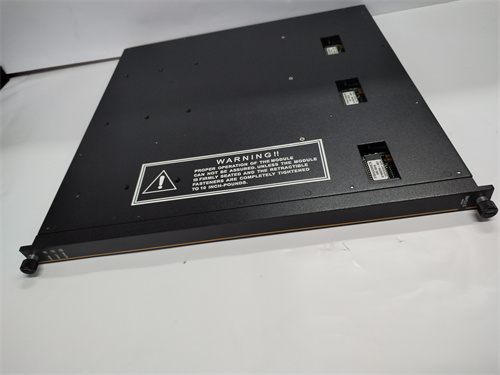
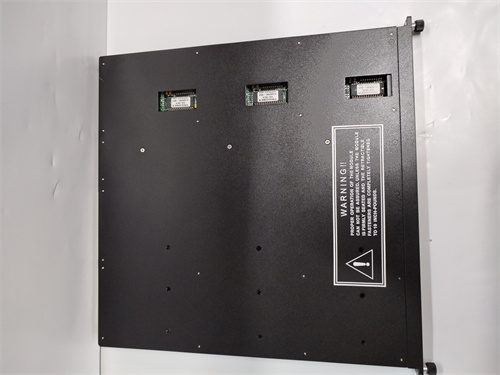


 +86 15340683922
+86 15340683922 +86 15340683922
+86 15340683922